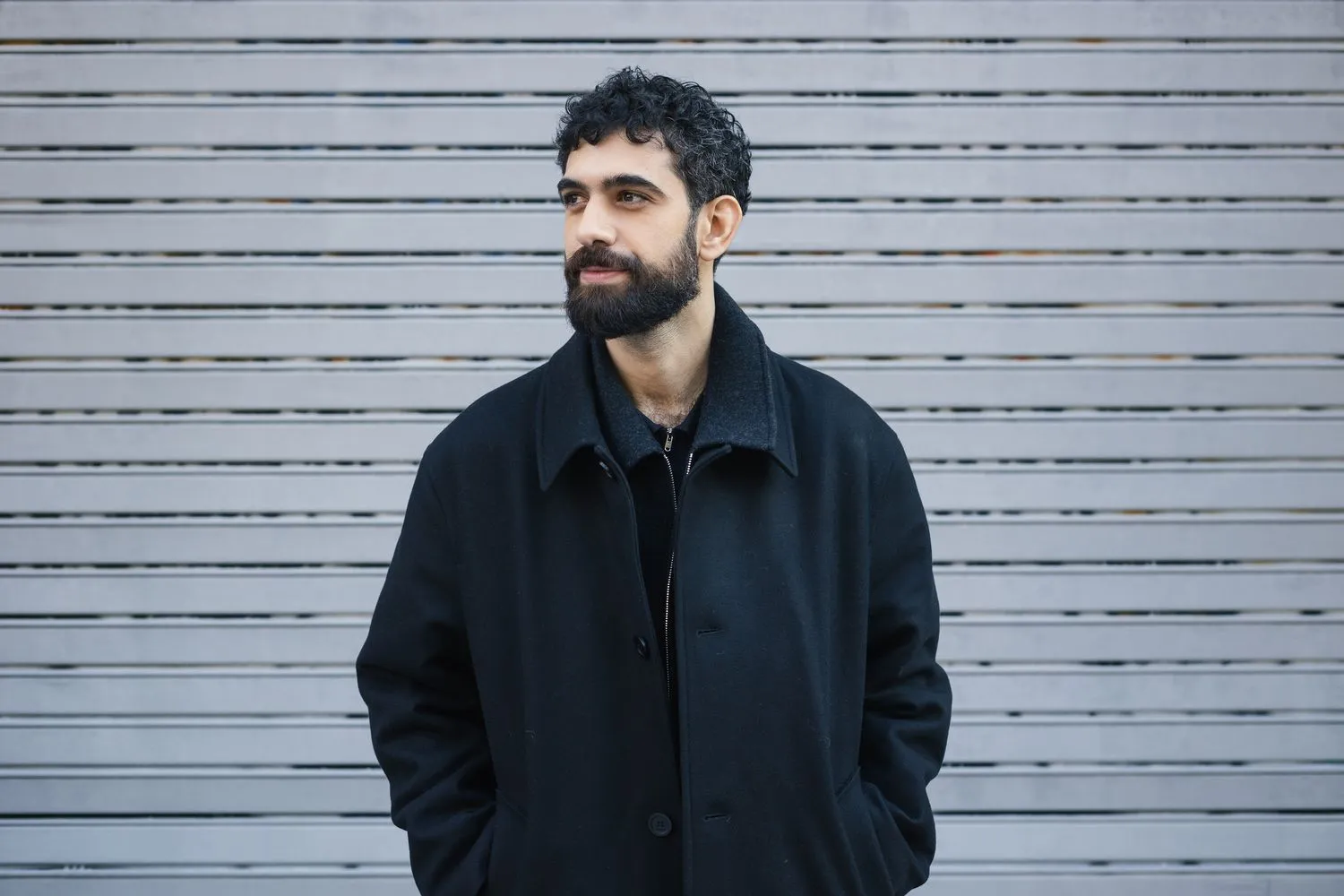 Panos Giannikopoulos @ Pinelopi Gerasimou
Panos Giannikopoulos @ Pinelopi Gerasimou Curator Panos Giannikopoulos has shaped his practice around attentive engagements with space, history, and social complexity. He is the curator and program coordinator of ARTWORKS, a platform supporting research-driven artistic projects in Greece, and has curated both local initiatives and international exhibitions, including the Greek Pavilion at the 60th Venice Biennale. His work navigates the intersections of architecture, politics, and embodied experience, emphasizing process, collectivity, and the ethical dimensions of curatorial practice.
In The Air Is Subtle, Yet It Moves, Giannikopoulos activates AMA House, a historic early 20th-century residence in Athens' Kypriadou Garden City. The exhibition brings together Greek and international artists whose paintings, sculptures, installations, videos, and performances respond to the building’s layered histories—from bourgeois home to military command post—and to the wider social, technological, and ecological forces that continue to shape contemporary life.
The exhibition unfolds through attention to architecture, materiality, and atmosphere, exploring the tensions between visibility and absence, human and non-human, memory and futurity. Artists engage with inherited systems of power, algorithmic governance, and spatial planning, creating a field where bodies, landscapes, and infrastructures intersect in unstable and affective ways.
In this interview, Giannikopoulos reflects on his curatorial approach, the historic and political resonances of Kypriadou Garden City, and the ways contemporary art can respond to shifting urban and ecological conditions. We discuss how the exhibition navigates tensions between order and experimentation, the body and environment, and local histories and global networks—tracing the lines through which space, memory, and contemporary artistic practice collide.
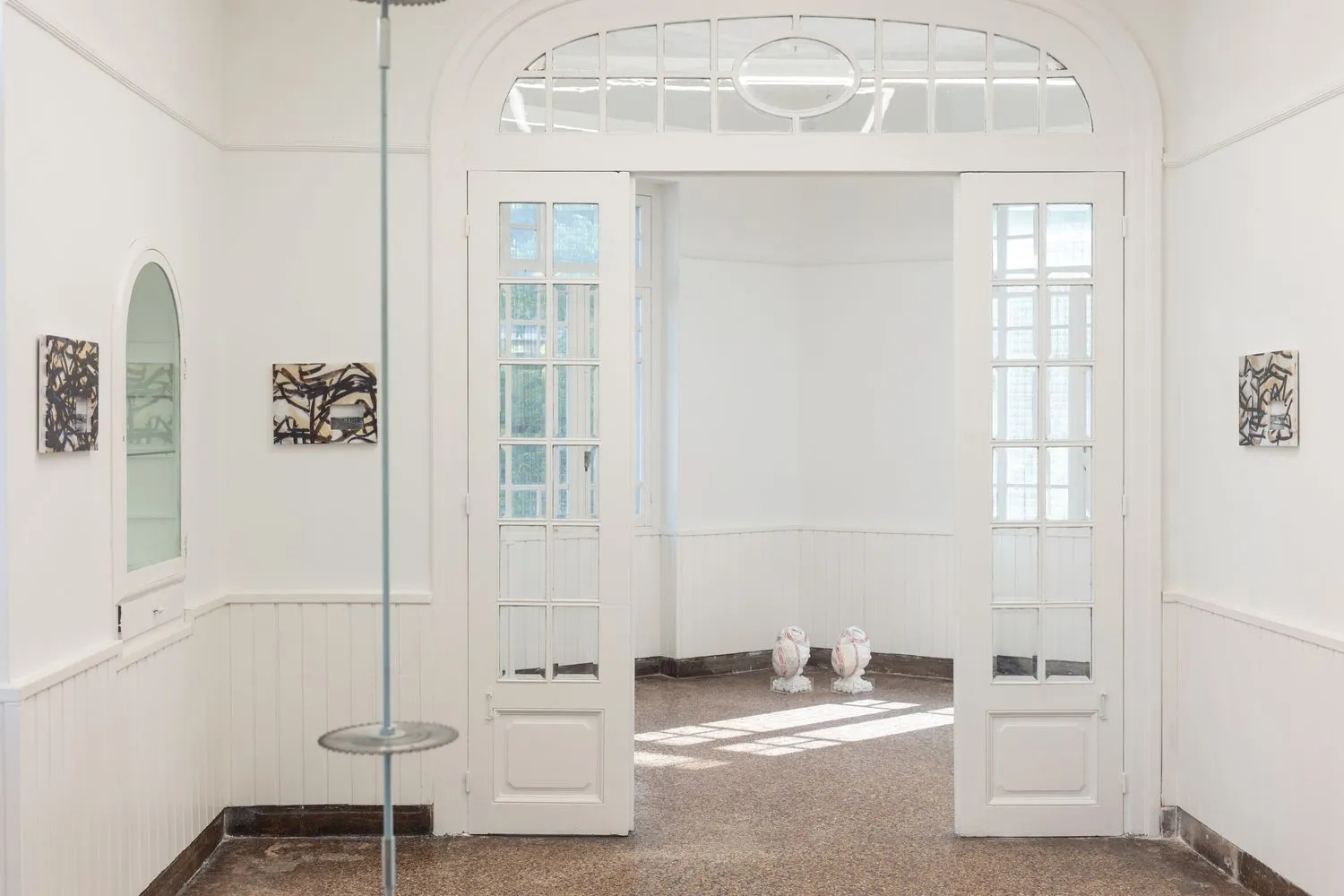
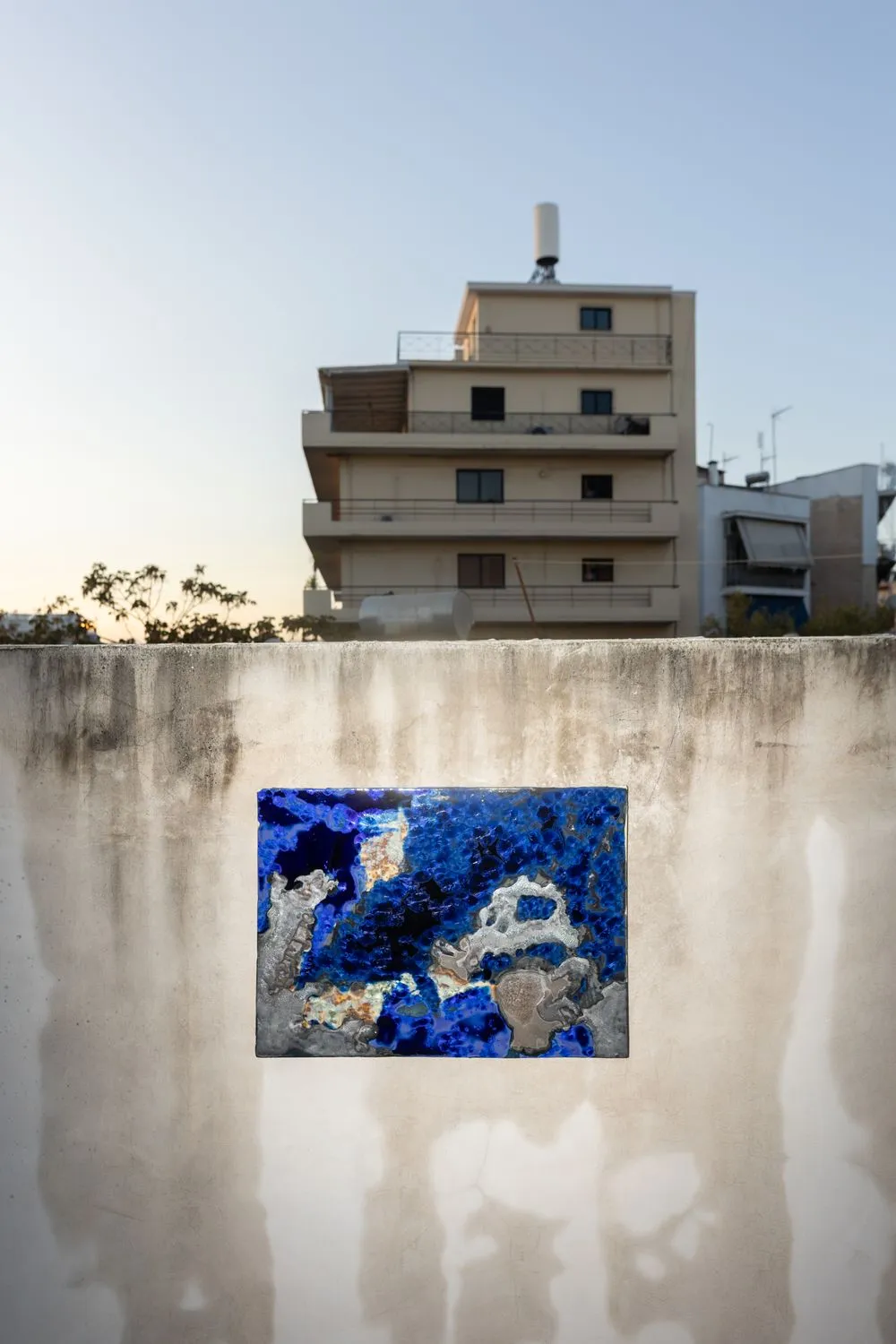
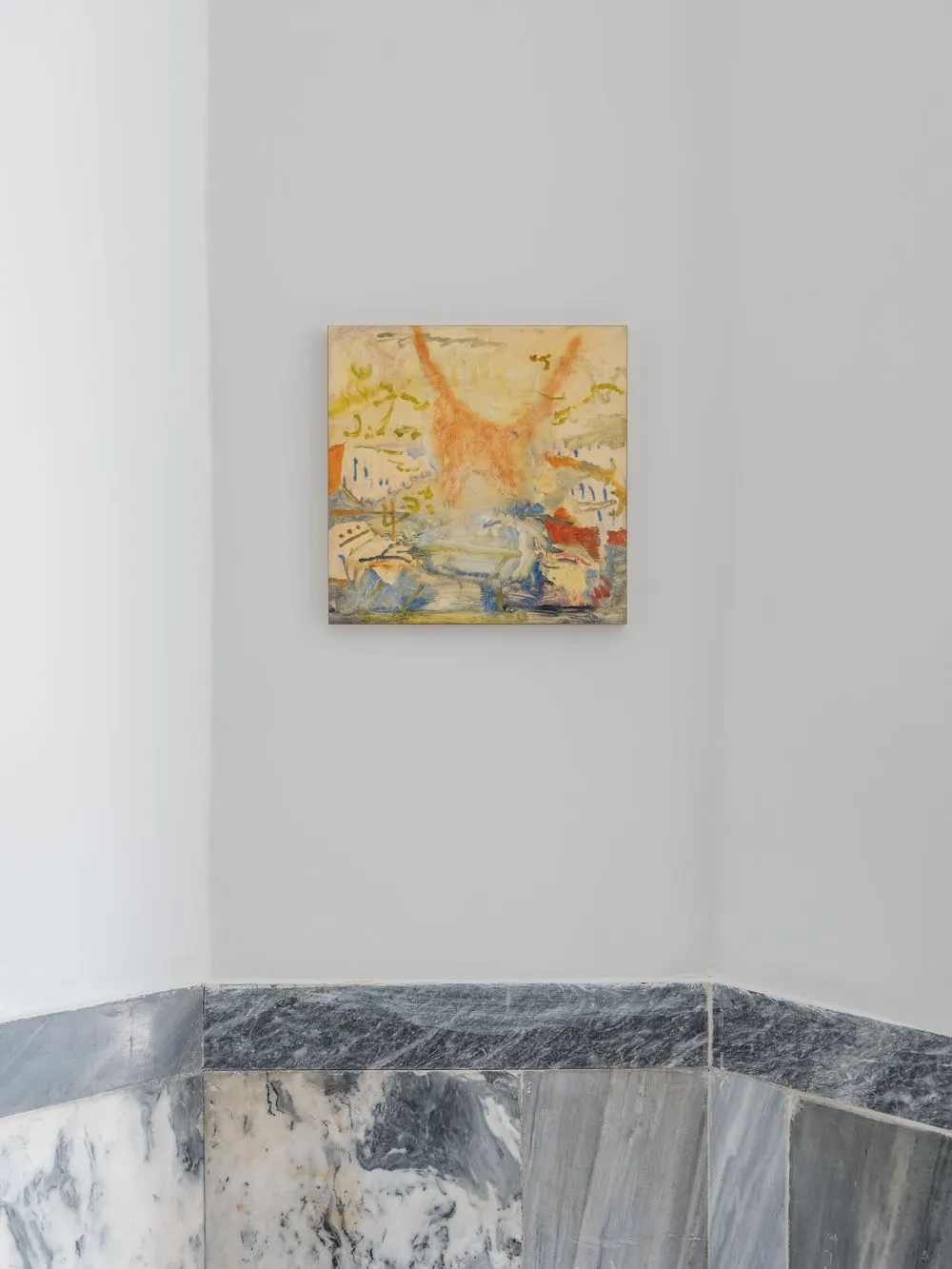
Jelena Martinović: Can you walk us through the history of AMA House and the Kypriadou Garden City? How did its layered histories inform how you approached the exhibition?
Panos Giannikopoulos: AMA House sits at the intersection of overlapping ideologies, architectural fantasies, and socio-political contradictions. Its position within Kypriadou Garden City, one of Athens' earliest planned suburban enclaves, situates it within a spatial projection of modernist optimism, middle-class aspiration, and a desire to discipline and organize life. Kypriadou was established in the 1920s through the private initiative of Epameinondas Kypriadis, who developed the area on inherited land. His vision followed the imported model of the European garden city: detached homes surrounded by gardens, wide streets, and open sightlines, designed to create a suburban ideal where order and tranquility appear as givens.
But this ideal conceals infrastructures of social sorting. The choreographed greenery and the contrast between natural and built environments articulate a fantasy of containment. These houses, one of which now hosts the exhibition, with their porches and turrets and ornamental domesticity, were designed to appeal to the rising middle class, especially high-ranking civil servants. At the same time, the neighborhood drew artists and intellectuals who embedded themselves within it while subtly disrupting its codes. Their presence infused the area with a contradictory energy. In the 1930s, the term “Kypriadis School” emerged to describe the artists living there, pointing to the formation of a distinctive intellectual and aesthetic milieu that emerged from this hybrid condition.
This complication of the suburban narrative is central to our approach. The presence of artists introduced a tension between the spatial politics of conformity and the aesthetics of experimentation. Many of these artists were directly engaged with questions of tradition and identity. Their work unsettled the normative image of postwar Greek suburbia and suggested alternative ways of inhabiting space.
AMA House, built during this era, reflects the architectural language of its surroundings while carrying additional historical weight. During World War II, the building was seized and repurposed by the British army as a command office. In a strange cohabitation, the owning family continued to live in the house alongside the military officers. This transformation from bourgeois residence to a node of military strategy points to the building’s capacity to shift between registers of comfort and control, domestic life and imperial surveillance. That ambiguous, oscillating role informs how we understood the house, as a structure already in tension, already animated by historical and psychic contradiction.
We approached AMA House as a palimpsest. The exhibition is not a historical reenactment. It is an effort to remain with the residues, the latent intensities, the interruptions, the forgotten affects that persist in architectural space. Air Is Subtle, Yet It Moves operates as a kind of tuning. The works listen to frequencies of inherited ideology, interrupted lives, psychic occupation, ecological vibration. The house thus becomes a co-author, a spatial archive of omissions and echoes.
This approach raised specific questions. How does architectural form encode the political? What are the affective and political costs of legibility, of spatial order, of the desire for clarity and control? How might we approach the (natural/built) environment as a porous system of entanglements, where human and more-than-human forces, bodily traces, and atmospheres of breath and movement are constantly reshaping one another?
Kypriadou Garden City, like many modernist spatial projects, carries beneath its surface a quiet violence. But it also contains a history of artistic dissent, of poetic inhabitation, of lives lived askew from its organizing logic. That double inheritance, of aspiration and anxiety, control and creativity, animates the exhibition.
We were also aware of the ways contemporary art, when claiming space in the city, participates in processes of gentrification and visibility. Rather than bypass this, we tried to acknowledge it and navigate its complexity. Exhibitions like this, however careful or critical in their framing, can still contribute to the softening of contested spaces, rendering them legible to capital, circulation, and the gaze of property development. Rather than rely on a rhetoric of immunity, we chose to remain with that discomfort.
We did not pretend the exhibition could resolve these contradictions, but we also refused to treat them as abstract. They are material, ongoing, and entangled with our own curatorial and artistic practices. We approached the house as a site already saturated with complicities, architectural, economic, emotional. Holding space, in this case, meant holding that complexity open, resisting closure, and making room for gestures that neither explain nor aestheticize their surroundings.
JM: The building's memory and architecture shape the experience of the exhibition itself. What kinds of tensions or resonances did you want the space to carry into the viewer’s encounter with the works?
PG: Architecture in this context acts as an agent. It sets conditions for legibility, orientation, and proximity. AMA House, with its blend of domestic intimacy and formal structure, creates a spatial vocabulary that invites attentiveness. The works engage directly with the building’s blind spots, its acoustics, and its material memory.
The terrace and garden are activated through the sculptural and ceramic interventions of Despina Charitonidi, which extend the exhibition into the open. Rebecca Ackroyd engages with the visual language of public sculpture found throughout the neighborhood, creating a gesture that draws the exterior into the interior. The utility room, with its marble sinks and laundry fixtures, becomes a projection site for Adham Faramawy’s moving image work, allowing the infrastructure of care and repetition to carry new intensities. Harm Gerdes intervenes in the attic space, while Eva Papamargariti installs a video loop in the ventilation and control room, turning the building’s operational systems into a space of poetic interruption.
We approached the architecture as a rhythm to be followed. The building’s unevenness shaped the exhibition’s tone. Jack McConville’s works unfold across awkward corners and compressed passages, creating shifts in visual tempo and reframing the act of looking. The materiality of the house, the warmth of wood, the narrowing corridors, the weight of doors and thresholds, guides a choreography of movement, sensation, and duration. Each work contributes to a spatial composition where viewing becomes affective and bodily.
AMA House carries a double charge. It embodies domestic safety and middle-class aspiration while also indexing systems of control, containment, and surveillance. We held that tension throughout the exhibition, allowing it to structure the experience. The works remain attuned to the space’s emotional and political density. The exhibition unfolds through proximity, drift, and resonance. Viewers move through the house as participants in a broader circuit, sensing transitions in tone, scale, and atmosphere. Attention emerges through movement. The works and their spatial settings form a dynamic relation, encouraging presence, hesitation, and a deeper kind of listening.
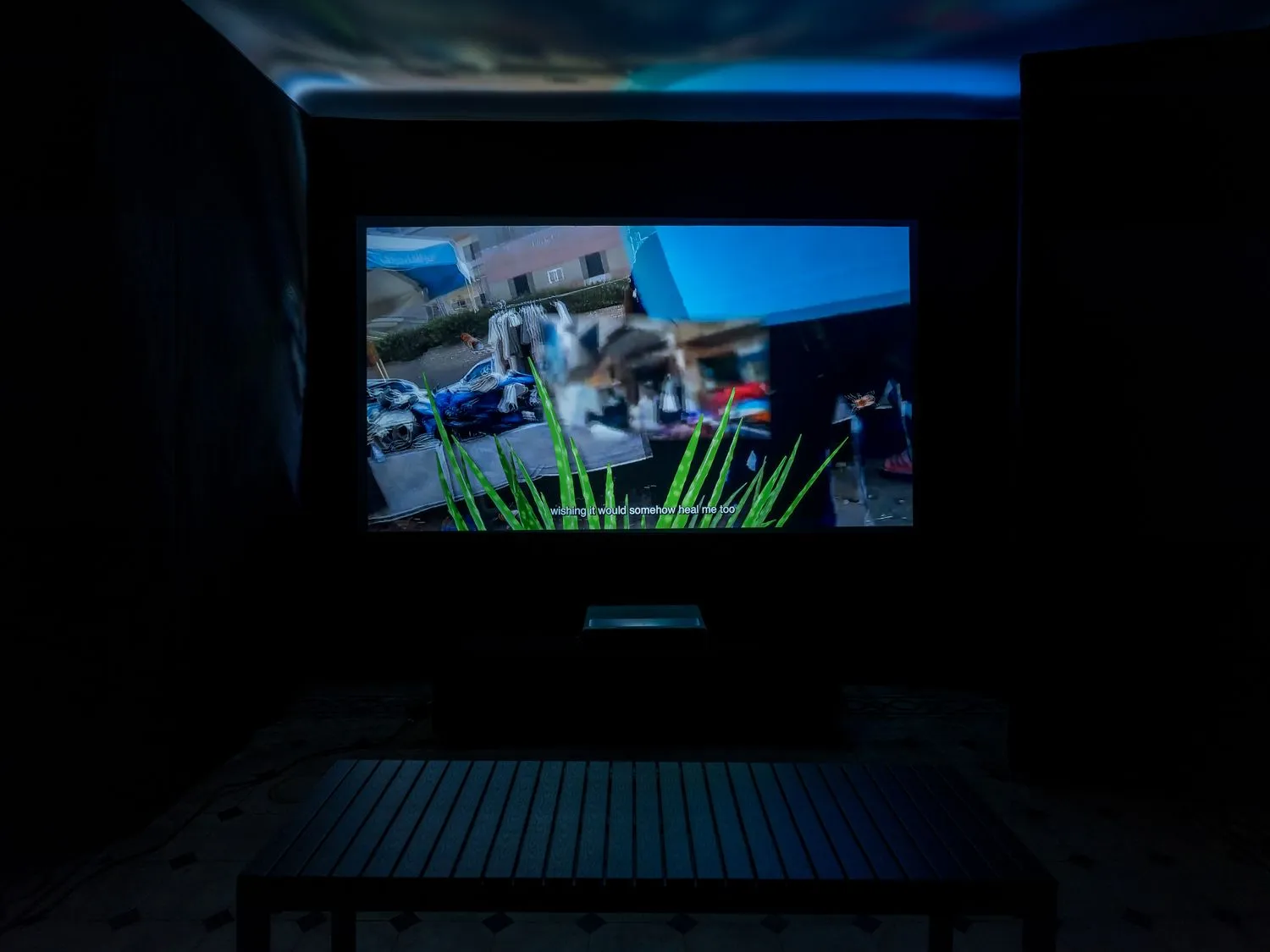

JM: The exhibition explores how bodies and landscapes are shaped and regulated by interconnected forces such as colonial histories, economic systems, technological automation, and algorithmic abstraction. How did you work with these complex and often invisible systems to reveal their ongoing material and social impacts?
PG: The forces you mention, colonial extraction, algorithmic governance, financial speculation, and infrastructural violence, do not usually present themselves directly. They move through abstraction and deferral, often framed as neutrality, efficiency, or progress. Their effects unfold across bodies, territories, and relations, shaping lived experience through slow and distributed mechanisms. These mechanisms include zoning policies, data infrastructures, resources, and systems of urban speculation. Rather than represent these conditions as visual subjects, we worked to create a curatorial field where such forces could be registered through their pressures, absences, and ruptures.
A core concern in our curatorial approach was how to engage with these systems without translating them into spectacle or allowing them to become consumable as images. The artists in the exhibition often work through material opacity, sensory disturbance, and temporal friction. Their works inhabit tensions. Through unstable surfaces, repetitive structures, sonic layering, and fragmented narratives, they suggest how systems of regulation inhabit the body, often as exhaustion, oversaturation, latency, or intensified presence.
Colonial memory, digital abstraction, and environmental extraction intersect in uneven and embodied ways. The works invite the viewer to sense these forces across different registers, temporal, affective, somatic.
We allowed the works to produce their own relationships and to articulate connections that remained unresolved or contradictory. Systems appeared not through direct interpretation, but through rhythms, architectural interruptions, and atmospheric shifts. The building’s history, as a domestic structure, a wartime command post, and a site of bureaucratic or social (it was also a restaurant and beer garden at some point) containment, provided a layered framework through which many of these questions moved.
We approached the exhibition as an interface that holds together different intensities, tempos, and modes of attention. The exhibition remained open to friction, ambiguity, and co-presence. This method emerged from a commitment to stay close to the complexity of the systems at stake, while resisting the urge to reduce or clarify them for ease of understanding.
JM: Kypriadou Garden City was designed as a model of urban order—a vision of tamed nature and controlled living. What made you want to confront that vision today?
PG: Because the spatial conditions it once projected continue to influence how cities are imagined, designed, and inhabited. Kypriadou Garden City expresses an ideology of spatial organization that brings domestic life into proximity with greenery, civic structure, and a sense of belonging. It unfolds as a system in which built forms and planted environments shape a modern ideal of living. Within this configuration, nature functions both as visual grammar and as a tool of governance, offering an organized presence that aligned with the ambitions of an emerging civil service class invested in stability and social recognition.
Today, this spatial logic remains active. It resonates through ecological policy, architectural trends, and new technologies of planning. Urban nature now moves through environmental indexes, digital platforms, and investment frameworks. It operates as both a sign of well-being and a programmable surface. Livability becomes a metric. Greenery becomes a credential. Design incorporates atmospheric cues calibrated for climate resilience and economic circulation. Kypriadou offers a setting in which these dynamics are both visible and felt. Its spatial language continues to shape perception and movement, while new housing developments alter its rhythm. The area accommodates overlapping temporalities. In its less maintained corners, more-than-human life continues to compose environments beyond calculation. Trees push through paved surfaces. Dust accumulates in unused interiors. The scent of dry soil, the presence of animals, and the play of light through overgrown gardens bring forward a layered ecology. Each element participates in a system of mutual involvement shaped by memory, materiality, and slow rhythms of change.
The exhibition responds through spatial composition and conceptual alignment. Drawing from the naturescultures framework of Haraway, Latour, and others, the project understands space as a condition that emerges from entangled infrastructures. These include soil, code, gesture, and sound. The house operates as a medium of convergence. It gathers past scripts, present improvisations, and future projections. Nature appears as an active presence shaped through cohabitation and grounded experience.
Each work in the exhibition activates this condition through distinct sensibilities. Some examine how protocols of control and aspiration leave traces on surfaces and gestures. Others draw attention to the interactions between bodies, plants, air, and light. Together, they foster a mode of perception that values shifts in intensity, atmospheric pressure, and shared inhabitation. Engaging with the garden city allows for an expanded reading of urban futures. Spatial planning involves selection and projection. At the same time, it evolves through compost, chance, and the slow accumulation of matter. Kypriadou brings this into focus. It holds within it forms of continuity and divergence, surfaces shaped by intention and surfaces shaped by use. It supports observation of spatial inheritance as a dynamic terrain formed through friction, care, and material interdependence.
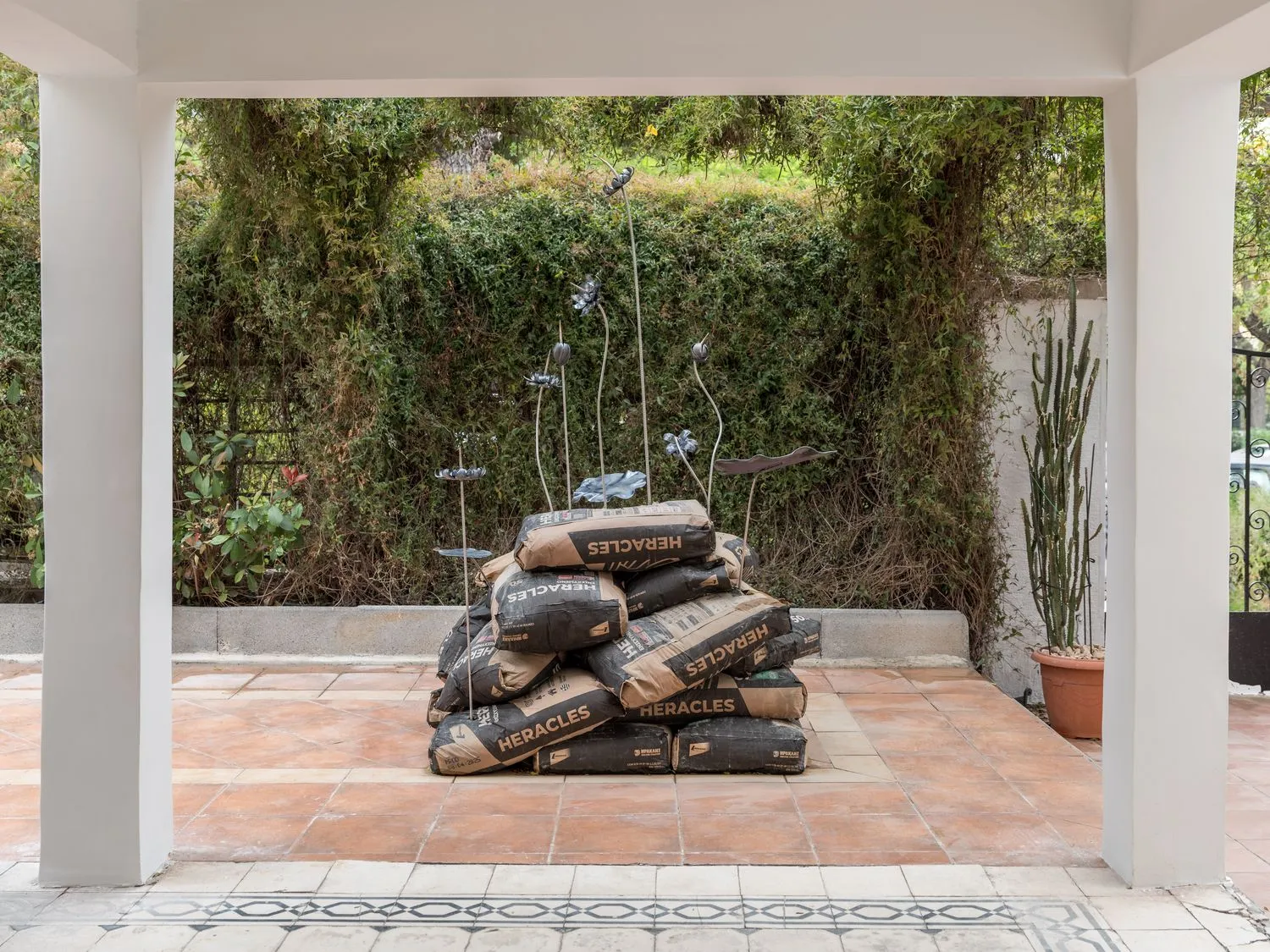
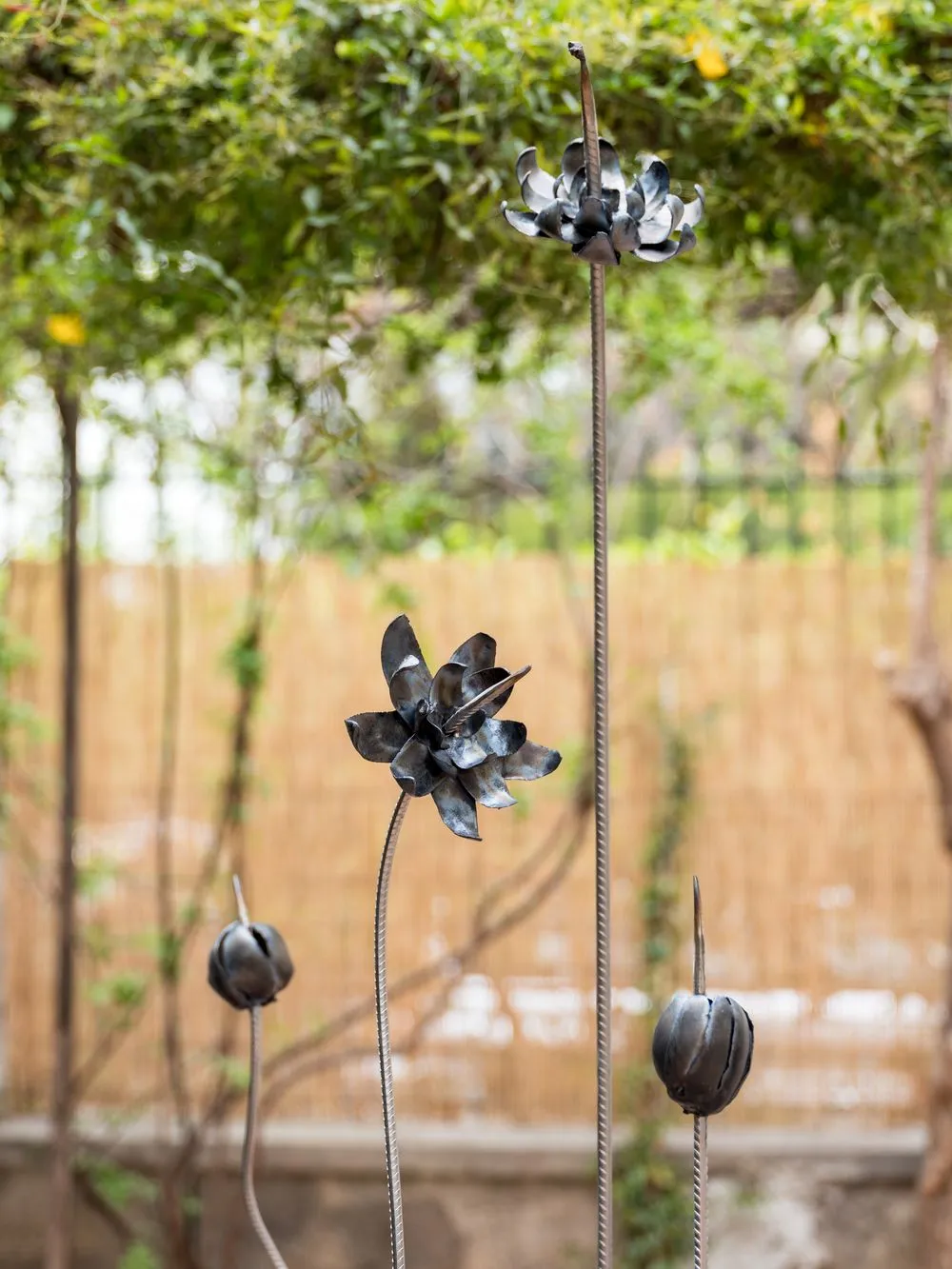
JM: The body appears throughout the exhibition as a charged and unstable site—fragmented, blurred, or abstracted. What kind of political or emotional charge do you think this brings into the space?
PG: The body in this show is not a stable referent. It trembles, evaporates, resurfaces in fragments. That instability is both aesthetic and political. We live in a time when bodies are hyper-surveilled, hyper-managed, where even affect and attention are subject to extraction.
Emotionally, this produces a kind of vibrating presence throughout the exhibition. You don’t always see the body, but you feel its absence or trace. The works channel the sensation of a body in hiding, a body remembering, a body dreaming under pressure. It’s not a romantic or heroic figure, it’s porous, unstable, at times barely discernible.
And yet, in its very fragmentation, it becomes political. It points to forms of embodiment that resist being flattened into categories or metrics. It gestures toward other ways of inhabiting the world: slower, stranger, unresolved.
JM: Parts of Athens once rich in artistic energy now face new pressures—from tourism to redevelopment. How does the exhibition respond to these shifts? And what kind of future does it imagine—or resist—for the city?
PG: Athens currently operates as both brand and battleground. Once framed as a European periphery, it now circulates as an “emerging” destination, a place marked by high symbolic value and low operational cost. Almost affordable rents, almost accessible studios, almost sustainable practices. This rebranding activates broader transformations: displacement, extraction, and the gradual erosion of self-organised infrastructures.
The exhibition acknowledges its position within this shifting terrain. It unfolds in a neighborhood that once held artistic significance, and that today remains largely outside the contemporary art map. Reactivating this site comes with contradictions. Rather than occupying it as a blank canvas or site of projected potential, the exhibition engages its existing textures. It approaches the neighborhood as a living context, attentive to the people who inhabit it, to the rhythms of daily life, and to the stories that remain embedded in its architecture and atmosphere.
This mode of working cultivates attentiveness rather than acceleration. It resists the coherence and speed of redevelopment narratives, and turns instead toward dissonance, residue, and minor rhythms. What emerges is a sensibility that registers what remains beneath renovation and what persists beyond investment cycles.
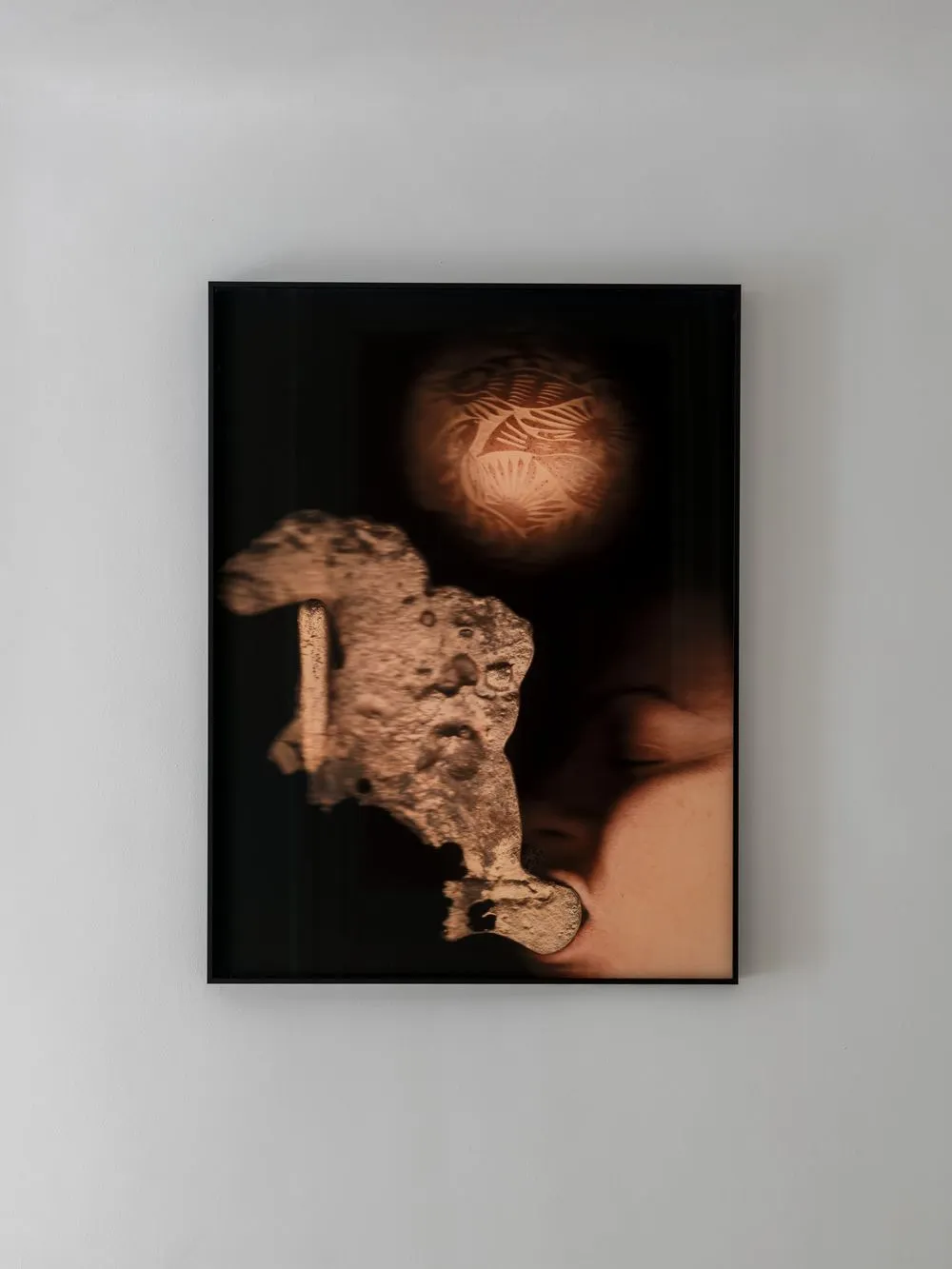
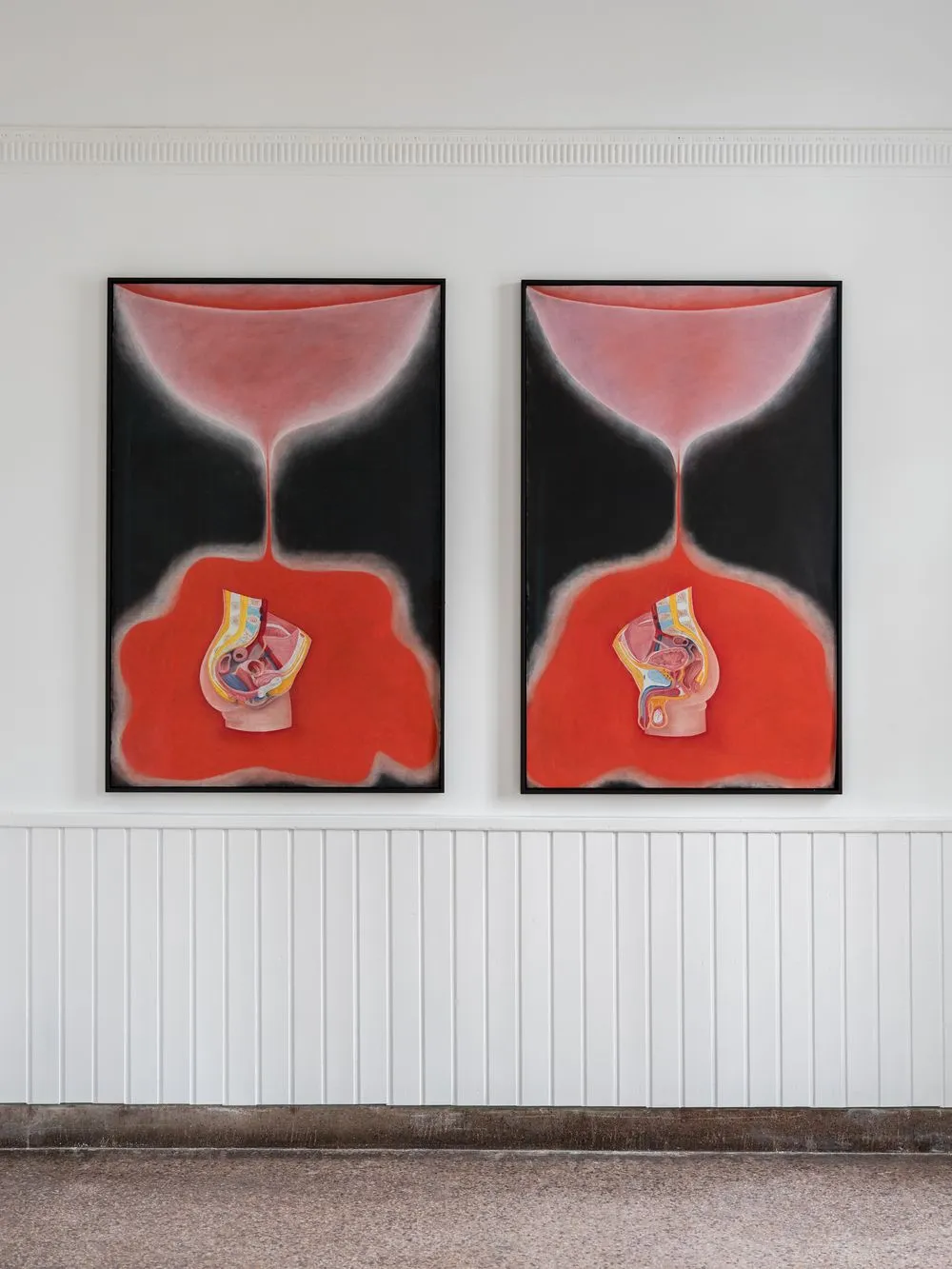
JM: Looking back, what did curating the Greek Pavilion in Venice mean for you—both personally and in terms of your curatorial practice?
PG: Curating the Greek Pavilion at the 60th Venice Biennale shaped my thinking in lasting ways. It unfolded through continuous negotiation, between curatorial intention, institutional expectations, collective decision-making, and the material conditions of an international exhibition. The process moved through shifting tempos and intensities, shaped by urgencies, delays, and the layered economies of time, labour, and visibility.
We approached the Pavilion as a shared composition. It became important to create a space where contradiction, unevenness, and accumulation could remain present. The format of the Biennale often encourages singular authorship, but we worked toward something more distributed. The exhibition emerged through relations between bodies, landscapes, documents, and traces and through a sustained engagement with process as a method.
This demanded a reframing of curatorial labour. Conceptual work remained central, yet the project also required logistical care, affective attentiveness, and long stretches of coordination. The conditions of the Pavilion surfaced questions around authorship, representation, and the value systems that shape what is seen, what is sustained, and what is held in reserve.
Personally, the experience brought new clarity to how I think about collectivity. I became more attuned to the fragile boundaries between collaboration and hierarchy, generosity and exhaustion. The process foregrounded the importance of designing working conditions that hold space for difference without letting extractive habits take hold. It reinforced my commitment to practices that prioritise respect, situated responsibility, and compositional ethics.
The format of the Biennale amplifies visibility, yet our attention remained with the textures that persist beneath and beyond the frame. What stays with me is the depth and volatility of the process itself. The Pavilion became a container for ongoing questions around belonging, authorship, sustainability, exhibition ecologies, and spatial politics.
JM: Your work moves between local contexts and international conversations. How do you see the Greek contemporary art scene evolving today, and what do you feel are the main challenges?
PG: The Greek contemporary art scene evolves through friction, resourcefulness, and collective persistence. It develops within conditions shaped by material limitation and a strong awareness of place. Many artists work through extended research, combining local urgencies with planetary concerns. This conjunction creates practices that remain grounded while generating broader resonances.
A new generation of practitioners is actively shaping its own infrastructures, through project spaces and editorial platforms. These initiatives introduce different rhythms of work, based on mutual support and conceptual experimentation. Rather than adapting to existing models, they articulate new ways of organising, often through provisional and adaptive means.
Within this landscape, I see the value of mid-scale structures that remain flexible and responsive. Through my work at ARTWORKS, I engage with a model that provides time, resources, and attention without prescribing outcomes. Since 2018, supported by the Stavros Niarchos Foundation, ARTWORKS has offered fellowships, grants, and residencies that prioritise depth, care, and exploratory thinking. These tools foster practices that are attentive to the present, while also capable of composing speculative and situated futures.
What matters is not only the expansion of institutional frameworks, but their ability to remain porous. The field strengthens when institutions operate alongside independent initiatives, not above them. This is why I value the role of organisations like ARTWORKS, which inhabit a space in between, supporting artistic labour while holding space for critique and divergence.
The central challenge concerns duration. Sustainability involves more than funding. It requires a redistribution of time, responsibility, and attention. What supports the scene is not acceleration, but the cultivation of structures that enable slowness and complexity as necessary conditions for art to exist as an ongoing proposition.